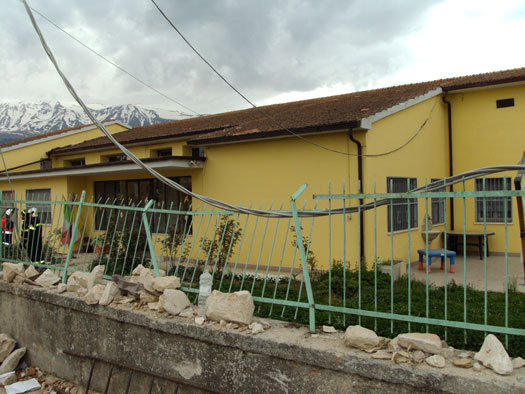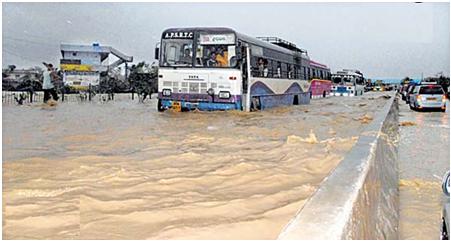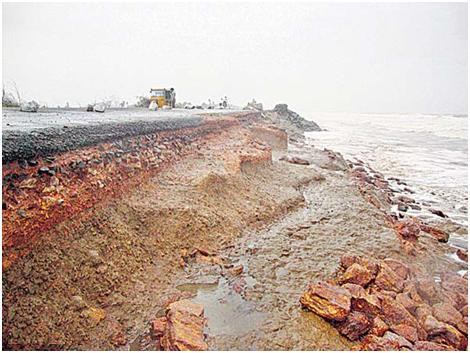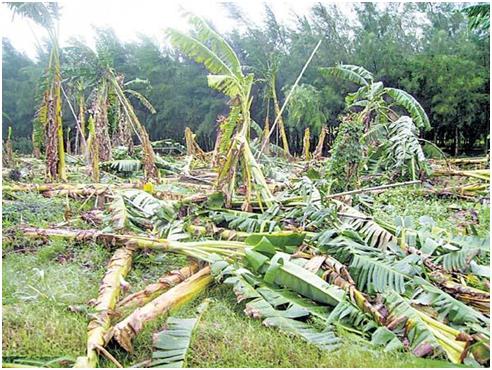Abruzzo (Italy) Earthquake
Status: Closed
Update 3 | Summary
Posting Date: April 22, 2009, 9:00:00 AM
Drs. Paolo Bazzurro and Guillermo Franco provide additional commentary from the Abruzzo region of central Italy where on April 6 a magnitude 6.3 earthquake struck, killing 295 people and leaving an estimated 28,000 homeless. AIR's Director of Engineering Analysis Dr. Bazzurro is leading the damage survey team from the Earthquake Engineering Research Institute (EERI) and is an author of "Comparison of NGA Ground Motion Prediction Equations to Italian Data," which was just accepted for publication in a forthcoming issue of the peer-reviewed Bulletin of the Seismological Society of America (BSSA). Dr. Franco, who joins him in Italy, is a Senior Research Engineer at AIR. Also on site is Dr. John Alarcon, a Research Associate and geotechnical engineer based in AIR's London office. He is a member of the Earthquake Engineering Field Investigation Team (EEFIT).
Abruzzo Earthquake: Survey Findings, Part II
Access to the historic center of L'Aquila—the so-called "Red Zone," which sustained the most damage—remains highly restricted. Permission must be granted by the Department of Civil Protection, but even then one cannot enter unless accompanied by a firefighter—and they are in short supply. There are several research teams here from around the world, and as far away as Japan. All of the teams met together with the Department of Civil Protection last night to discuss lessons learned thus far.
L'Aquila's Red Zone is a ghost town. Indeed, an estimated 70,000 to 80,000 people have been evacuated from the affected region, mostly to hotels along the Adriatic coast that would otherwise be housing tourists at this time of the year. Many of these residents may be able to return in a month or two, but not until thorough inspections have taken place to determine habitability. Outside the Red Zone, homeowners are authorized to stay if their houses have been green-tagged, but many residents are sleeping in tents in their gardens for fear of aftershocks, which continue.
Damage to unreinforced masonry buildings has been severe. Even in cases where a building looks relatively intact from the outside, the inside may reveal total destruction, with floors having pancaked in some cases. Thus to get an accurate sense of the extent of the damage, it is necessary to survey building interiors, which presents very real risks.
The large majority of reinforced concrete buildings in the epicentral region fared well if we consider that they were subjected to a ground motion equal to or greater than that for which they were designed. In the last 25 years L'Aquila and its province were considered to be in the "Class 2" seismic area of the building code, which means that these buildings were designed for a horizontal acceleration of 0.25g. Yet in the epicentral region, maximum accelerations up to 0.67g were measured, and one recording station went off scale at 1g (see discussion below).
Among the construction classes here, modern reinforced concrete (RC) frame buildings (i.e., those designed after 2003 when the last building code was issued) performed much better than those built in the 1960s through the 1980s. Modern RC frame buildings usually suffered no exterior damage or perhaps minor/moderate damage to exterior and interior clay brick partitions. Figure 1 shows a typical example; while this building will be costly to repair, there is no damage to the underlying structure.

Figure 1. Reinforced concrete buildings designed after the most recent code (2003) fared much better than their older counterparts. Source: AIR
The team found one modern building on the verge of collapse. Its many columns were completely severed in shear (Figure 2), probably due to the short wall near its base and possibly exacerbated by a faulty design that did not properly consider torsional effects (i.e., rotation along the vertical axis resulting from stiffness and plan irregularities in the building). This building is unlikely to be saved.

Figure 2. One exception to the general success off modern RC frame; severed columns will likely result in demolition of this building. Source: AIR
In the town of Pettino, not far from L'Aquila, the EERI survey team found several instances of soft-story effects. Two out of four almost identical buildings collapsed in this failure mode and two survived—a stark example of the uncertainty that must be taken into account when modeling building vulnerability. Figure 3 shows one of the collapsed buildings, whose columns on the first story, used for parking, failed—a classic example of soft-story failure. An earthquake survivor told the team that the mainshock of April 6 generated significant damage, which lowered the first floor by about a foot. A subsequent aftershock caused the first story to collapse completely. The first-story column-beam connections displayed insufficient stirrup reinforcement (large spacing and small diameter) and short anchorage lengths around the beam longitudinal rebar in the column.

Figure 3. Many soft-story failures were observed in the town of Pettino, which sits on soft soils. Source: AIR
The second building in this cluster of four collapsed during the mainshock. The other two remained standing, although one showed significant separation of the infill walls in the first story, indicating an incipient similar failure mechanism that did not develop fully. The fourth experienced only minor exterior damage (Figure 4).

Figure 4. An almost identical building to the one shown in Figure 3 survived relatively unscathed. Source: AIR
The green shed in the foreground of Figure 5 (circled in yellow) houses the strong ground motion station at the "Moro" location near the presumed fault plane. It registered a peak ground acceleration (PGA) of over 1g, saturating shortly thereafter. Investigations are still taking place to make sure that the instrument did not malfunction during the earthquake.

Figure 5. Shed housing a strong ground motion recording instrument that registered PGA more than 1g before saturating; remarkably, the nearby three-story RC building was untouched. Source: AIR
The station is surrounded by several identical six-story reinforced concrete structures (Figure 6) built in the late 1980s to early 1990s that showed no apparent structural damage, only moderate cracking to the infill walls. Furthermore, the green three-story RC frame building located just above and across the street from the recording station, which was recently remodeled, remained completely untouched (Figure 5). This finding will likely prompt thorough investigation in the engineering community to better understand how these buildings could survive relatively unscathed under such severe ground motion.

Figure 6. Six-story RC frame buildings located very near the station that recorded accelerations of 1g sustained only minor to moderate cracking—a finding that will surely result in further investigation. Source: AIR